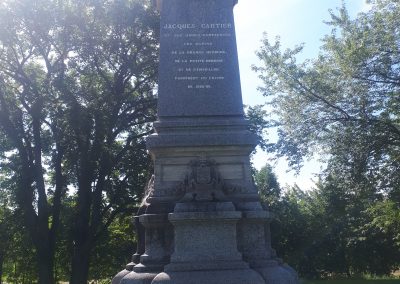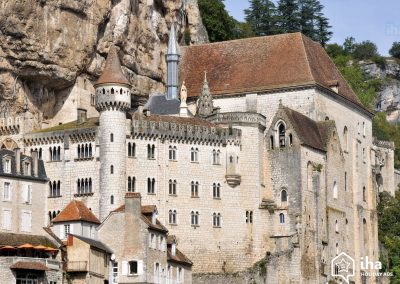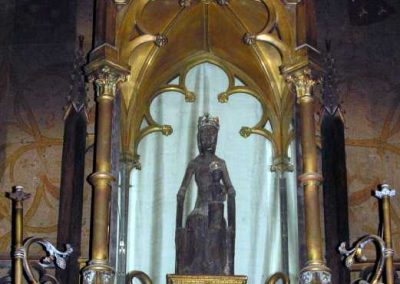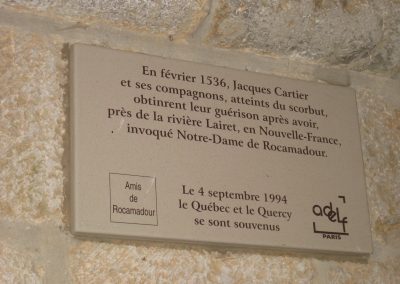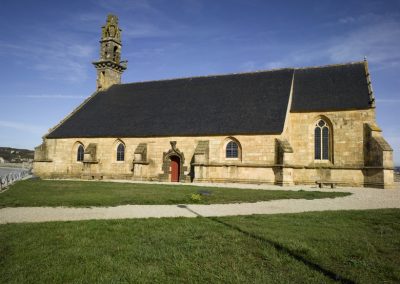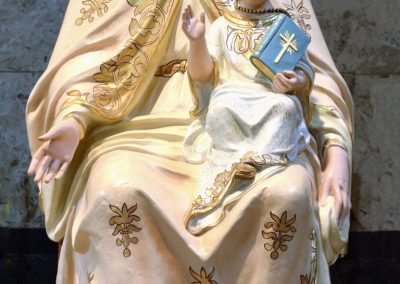First pilgrimage on the canadian soil
Jacques Cartier undertook a second voyage:
In 1535, King François I sent Jacques Cartier to Canada again. This time, the navigator left with three ships and 110 men. In order to discover the famous gold mines of the Saguenay kingdom, as well as the no less famous passage to Asia, Cartier undertook a new expedition to the “New Lands”. This time, he did not fail to bring with him two missionary priests in order to start the evangelization of the different native peoples. Jacques Cartier, in fact, had been moved during his first trip by the lack of knowledge that these peoples had of Christ. It was on May 29, 1535 that their departure took place. Three ships set sail from St-Malo, they are La grande Hermine, La petite Hermine and L’Émerillon.
La Bonte Sainte Anne rescued of the fleet:
The crossing was very stormy; the weather, as he tells it himself, had turned ‘into anger and turmoil’; his small flotilla of three ships was scattered and pushed by the wind; each ship took an opposite direction. “Two months later Cartier dropped anchor at Blanc-Sablon. But what happened to his companions? In vain his gaze questioned the vast ocean. Will they ever come? A Breton never ceases to hope until after invoking the Good Saint Anne, patron saint of navigators. The prayer begins fervently; the priest who always accompanies the sailor in his expeditions presides over it. Days passed and no sail appeared on the horizon. Finally, a black spot emerges in the distance of the sea, then a piece of sail, then a small ship, then a second one […]. It was July 26, 1535, the feast day of the Good Saint Anne. The joy of all the sailors gathered together bursts out in thanksgiving to their merciful patroness; they celebrate the first feast of Saint Anne in Canada in the most holy way possible” (c.f. La Bonne Sainte Anne, pages 10 and 11).
First pilgrimage to Canada:
On his second voyage to Canada, Jacques Cartier brought with him a picture of the Madonna of Rocamadour. The winter he spent in Quebec City from November 1535 to April 1536 was particularly difficult. Surprised by the harshness of the winter, Jacques Cartier found himself immobilized in the ice of the St. Lawrence, aboard the ship the Grande Hermine. Scurvy was rampant on board, and 25 crew members were dead, 75 were already afflicted, and 40 cases were hopeless. Only a dozen sailors were still alive.
Jacques Cartier tells us in his logbook: “In December, we were warned that mortality had started among the people of Stadadacona. So much so that more than fifty had already died by their confession; therefore, we forbade them to come to our fort, nor [among] us. But in spite of having driven them out, the disease began to spread among us, of a marvelous and unknown kind; for some lost their strength, and their legs became fat and swollen, and their nerves were drawn and blackened like charcoal, with here and there drops of blood as if they were purple. Then the disease went up to the hips, thighs and shoulders, to the arms and the neck. To all of them came the mouth so foul and rotten by the gums, that all the flesh fell out of it, up to the root of the teeth, which almost all fell out. And the disease took so much in our three ships, that in the middle of February, of one hundred and ten men that we were, there were not ten valid, so that one could not help the other, which was a pitiful thing to see, considering the place where we were. For the people of the country came, every day in front of our fort, who saw few people standing; and already there were eight dead, and more than fifty in whom no more life was hoped for”.
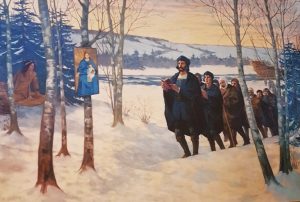 The captain, seeing the pity and sickness thus aroused, had the world put into prayer and orations, and had an image of the Virgin Mary carried against a tree, distant from our fort by a line of bow, through the snow and ice. He ordered that on the following Sunday, mass would be said there (the expedition had two chaplains, Dom Guillaume and Dom Anthoine), and that all those who could walk, both healthy and sick, would go to the procession, singing the psalms of David, with the litanies, and praying to the Virgin that she would be pleased to pray to her dear Child that he would have mercy.
The captain, seeing the pity and sickness thus aroused, had the world put into prayer and orations, and had an image of the Virgin Mary carried against a tree, distant from our fort by a line of bow, through the snow and ice. He ordered that on the following Sunday, mass would be said there (the expedition had two chaplains, Dom Guillaume and Dom Anthoine), and that all those who could walk, both healthy and sick, would go to the procession, singing the psalms of David, with the litanies, and praying to the Virgin that she would be pleased to pray to her dear Child that he would have mercy.
And the mass said and sung in front of the aforementioned image, the captain made himself a pilgrim to Our Lady who is prayed to in Rocamadour (famous pilgrimage of the High-Quercy, by promising to go there if God gave him grace to return in France. On that day, Philippe Rougemont, a native of Amboise, died at the age of about 22. “This atrocious ordeal struck the unfortunate people until mid-March, “during which time we lost up to twenty-five of the principal and good companions we had, who died of this disease. For the time being, there were more than forty in whom no more life was hoped for; and in addition all were sick, so that no one was exempted, except three or four. But God, by his holy grace, looked upon us with pity, and sent us the knowledge and remedy of our healing and health.
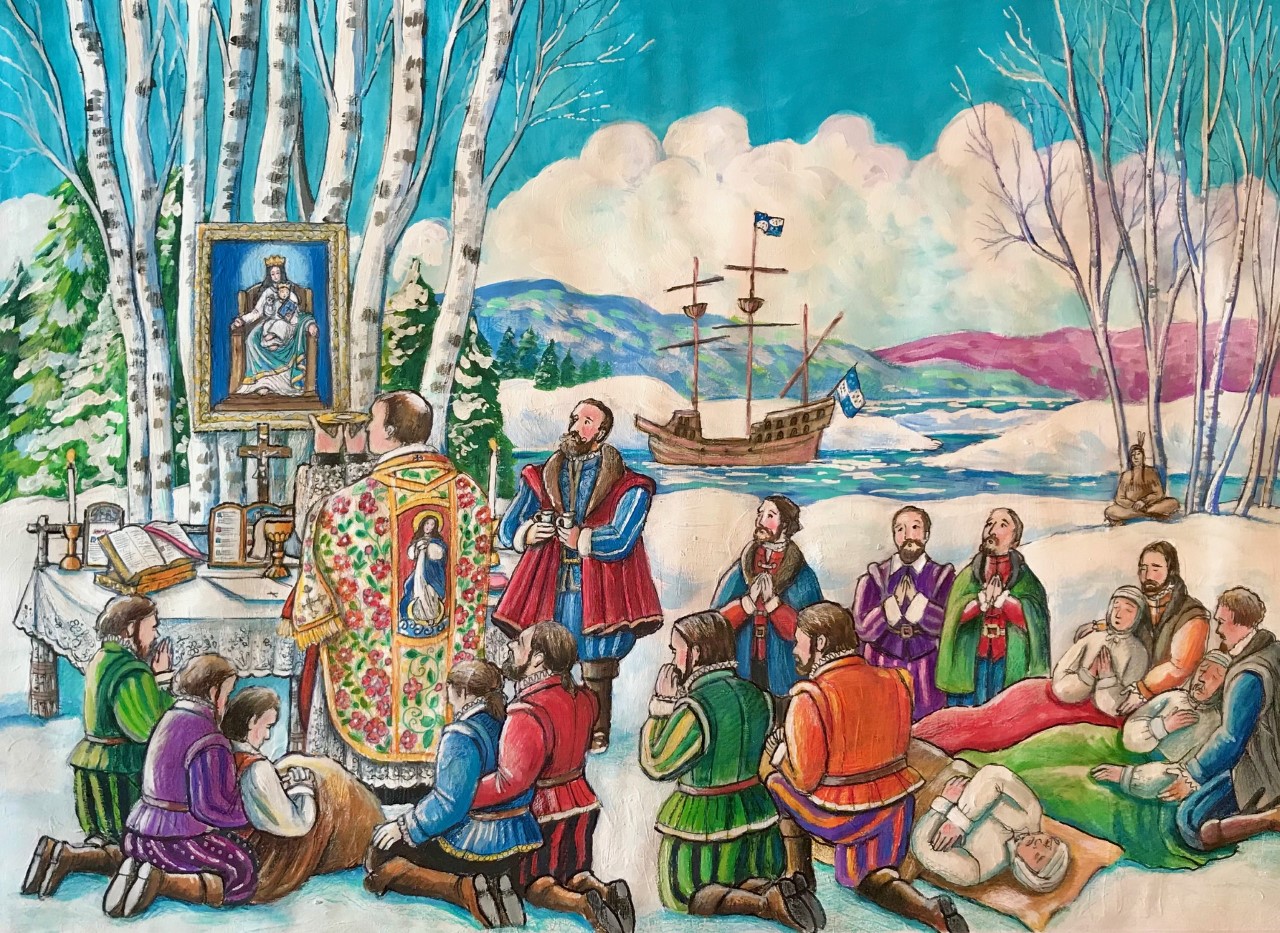
Shortly thereafter, Domogaya, the son of the Amerindian chief of Stadaconé (Quebec), came out of the forest to get a closer look at the singing French. Jacques Cartier had recognized him, since he had seen him affected by a similar illness a week earlier. He resorted to a ruse to hide the vulnerability of his troop. Using the illness of his servant as an excuse, Cartier asked about the remedy used by Domagaya. The Amerindian pointed out a tree whose branches, when crushed and mixed with water, provided a rapid cure. He sent two women to accompany Jacques Cartier to gather the leaves and bark of the tree and to show him how to boil them. In six days, the Amerindian know-how completely cured the members of the crew. It is the white cedar tea (the anedda), which will heal the crew. Jacques Cartier himself recognized “a true and obvious miracle of Our Lady of Rocamadour”.
Jacques Cartier brought back to King François I, at his castle of Fontainebleau, some seeds of this miraculous tree. Under the name of “arbor vitae” or tree of life, the tree will then know a lightning diffusion in Europe.
A sanctuary dedicated to Notre-Dame-de-Rocamadour was erected in Quebec City in the church of Saint-François d’Assise. The church closed its doors in 2010, and the shrine was transferred to Saint-Fidèle church. Artifacts from the crypt of Notre-Dame-de-Rocamadour located under the building were also moved. The location of the crypt is, according to historians, the place where Jacques Cartier prayed to survive scurvy in the winter of 1535.
Sources:
BÉLANGER, Georges, La Bonne Sainte Anne au Canada et à Beaupré, pages 10 and 11.

